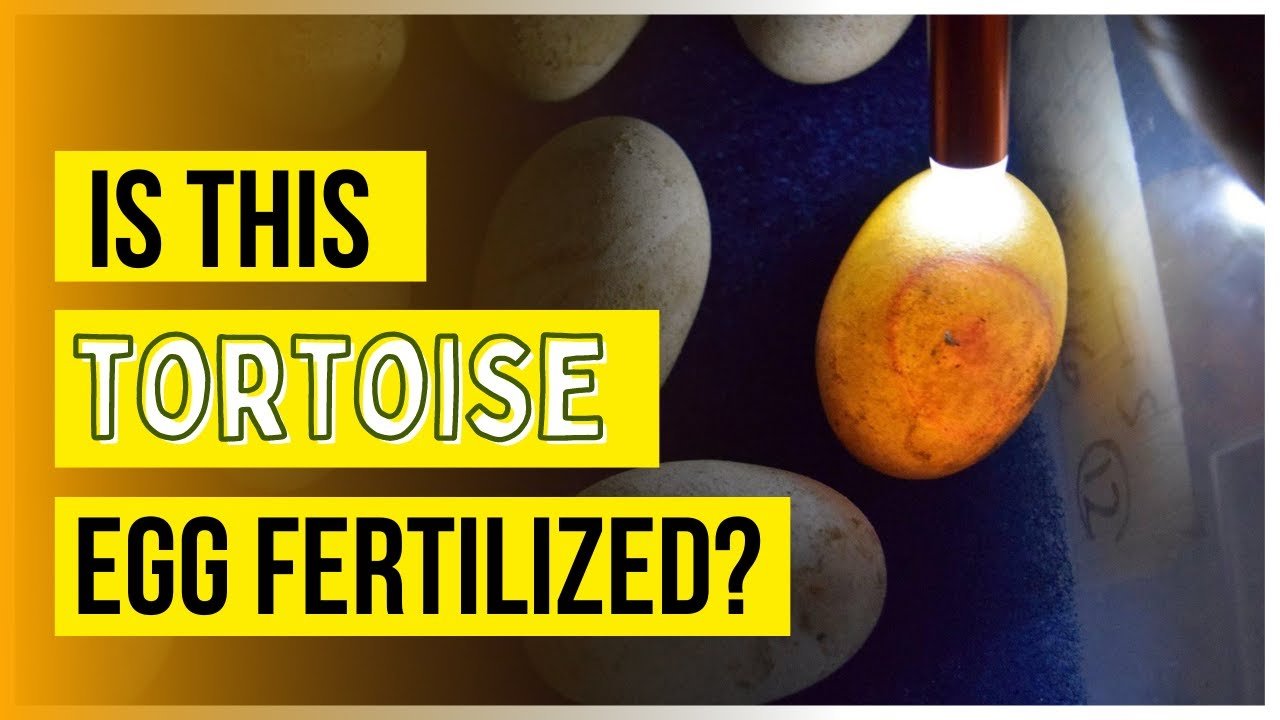Tortoise eggs can be a mystery. Are they fertile or not?
Knowing if your tortoise eggs are fertile is crucial for successful hatching. Fertile eggs have the potential to grow into healthy baby tortoises. This can be an exciting experience for any tortoise owner. But how can you tell if the eggs are fertile?
This guide will help you understand the signs to look for. From simple visual checks to using a technique called candling, you will learn practical methods. By the end, you will feel confident in determining the fertility of your tortoise eggs. Let’s dive in and discover the secrets hidden within those shells!
Identifying Fertile Tortoise Eggs
Determining if tortoise eggs are fertile can be challenging. But with careful observation, you can spot signs of fertility. This section will guide you through the physical and behavioral clues to identify fertile tortoise eggs.
Physical Signs
Physical signs are the most direct way to check egg fertility. Look for these indicators:
- Shell Appearance: Fertile eggs often have a more opaque shell. Infertile eggs tend to look translucent.
- Size and Shape: Fertile eggs are usually uniform in size and shape. Irregular shapes might indicate infertility.
- Coloration: Fertile eggs might show a pinkish hue under strong light. This is due to blood vessel development.
You can also use candling to inspect the inside of the egg. Hold the egg up to a bright light in a dark room. If you see veins or a dark mass, the egg is likely fertile.
Behavioral Clues
Behavioral clues from the mother tortoise can also hint at fertility:
- Nesting Behavior: If the female tortoise exhibits nesting behavior, there is a higher chance the eggs are fertile.
- Protective Instincts: A mother tortoise protecting her nest is a good sign. This behavior often indicates she believes the eggs are viable.
- Temperature Regulation: Female tortoises sometimes adjust the nest temperature. This behavior helps ensure the eggs develop properly.
Observing the mother’s actions provides useful insights into the eggs’ fertility.
Credit: www.reptileforums.co.uk
Candle Lighting Technique
The Candle Lighting Technique is a popular method to check if tortoise eggs are fertile. This method involves shining a light through the egg to observe the contents inside. You can see the embryo’s development, which indicates fertility. This technique is easy and non-invasive, making it ideal for breeders and enthusiasts.
Required Tools
- A bright flashlight or candle
- Dark room or space
- Soft cloth or towel
Step-by-step Process
- Gather your tools: Ensure you have a flashlight or candle, a dark room, and a soft cloth.
- Prepare the eggs: Place the eggs on a soft cloth to prevent damage.
- Darken the room: Find a dark room or space to perform the technique.
- Illuminate the egg: Hold the flashlight or candle against one end of the egg.
- Observe the egg: Look for veins or a dark spot, indicating a fertile egg.
By following these steps, you can easily identify fertile tortoise eggs. This knowledge can help ensure the successful hatching of healthy tortoises.
Incubation Insights
Understanding the incubation process is crucial for determining if tortoise eggs are fertile. By monitoring the right conditions and observing the development stages, you can ensure a successful hatching process. This guide will provide detailed insights into the incubation process for tortoise eggs.
Optimal Conditions
Maintaining the correct temperature and humidity is essential for successful incubation. Tortoise eggs usually require a temperature range of 82°F to 86°F (28°C to 30°C). Too high or too low temperatures can affect embryo development.
Humidity levels should be kept between 70% and 80%. Use a hygrometer to monitor humidity levels accurately. You can achieve this by placing a bowl of water in the incubator or spraying the substrate lightly with water.
| Condition | Optimal Range |
|---|---|
| Temperature | 82°F to 86°F (28°C to 30°C) |
| Humidity | 70% to 80% |
Monitoring Progress
Regularly checking the eggs is crucial to ensure they are developing correctly. Use a technique called candling to monitor the progress.
Here’s how to do it:
- Darken the room.
- Hold a bright flashlight close to the egg.
- Look for veins or a shadow inside the egg.
If you see veins or a dark mass, the egg is likely fertile. Clear eggs without any visible changes are usually infertile.
Be gentle when handling the eggs. Rough handling can damage the developing embryo.

Credit: startortoises.net
Common Mistakes
Ensuring tortoise eggs are fertile can be challenging. Many make common mistakes that can affect the results. Understanding these mistakes can help improve your chances of success.
Avoiding Damage
Handling tortoise eggs can be risky. Eggs are very fragile and need gentle care. Rough handling can cause cracks or other damage.
Always use clean hands or gloves. Dirt and oils from your skin can harm the eggs. Keep the eggs in a stable, secure location. Avoid moving them too much. Sudden movements can harm the embryo inside.
Recognizing Infertile Eggs
Identifying infertile eggs early saves time and effort. Infertile eggs often look different from fertile ones. They might appear discolored or have a different texture.
Use a light source to check the egg’s contents. This process is called candling. Hold the egg up to a bright light. Fertile eggs usually show clear signs of development. Infertile eggs may appear empty or cloudy inside.
Regularly check the eggs for signs of mold or bad odor. These are common indicators of infertility. Separate any suspicious eggs to avoid contaminating the others.
Egg Handling Tips
Handling tortoise eggs requires great care and attention. Proper handling helps ensure the health and viability of the eggs. Here are some essential tips to follow when managing tortoise eggs.
Proper Care
Proper care is crucial for fertile tortoise eggs. First, always use clean hands or gloves when handling the eggs. This helps prevent contamination. Next, keep the eggs in an incubator set to the correct temperature and humidity levels. Tortoise eggs need specific conditions to develop properly.
Label each egg with the date it was laid. This helps you track their progress. Regularly check the incubator to ensure it is functioning correctly. Make sure the eggs are positioned correctly. The top of the egg should always face up. Rotating the eggs can harm the embryos.
Safety Precautions
Safety is paramount when handling tortoise eggs. Gently handle the eggs to avoid causing damage. Avoid shaking or dropping the eggs as they are very fragile. Use soft materials like sand or vermiculite as a bedding substrate. This provides a stable environment for the eggs.
Maintain a clean and controlled environment. Keep the eggs away from direct sunlight and extreme temperatures. Ensure that the incubator is kept in a location free from disturbances. This helps in maintaining the eggs’ integrity and increases the chances of hatching healthy tortoises.
| Handling Tips | Details |
|---|---|
| Clean Hands/Gloves | Prevents contamination |
| Correct Temperature | Essential for proper development |
| Labeling | Tracks egg progress |
| Proper Position | Top of the egg faces up |
| Gentle Handling | Avoids damage |
| Stable Environment | Prevents disturbances |

Credit: www.youtube.com
Signs Of Development
Identifying whether tortoise eggs are fertile can be a challenging task. To help you, here are some key signs of development in tortoise eggs. These indicators will guide you in determining if your tortoise eggs are fertile.
Embryo Movement
One of the early signs of fertility is the movement of the embryo. If you notice slight movements within the egg, it is a positive indication. Check for these movements by gently shining a light through the egg. This method is known as candling. The embryo should be visible and active, signaling life inside the shell.
Vein Formation
Another crucial sign of development is the formation of veins. Veins inside the egg show that the embryo is growing. During candling, look for a network of red veins branching out from the center. These veins provide nutrients to the growing embryo, indicating that the egg is fertile.
| Sign | Description |
|---|---|
| Embryo Movement | Visible movements within the egg when candling. |
| Vein Formation | Network of red veins visible inside the egg. |
By observing these signs, you can determine if your tortoise eggs are fertile. Proper monitoring and care will ensure the successful development of the embryos.
Expert Advice
Knowing if tortoise eggs are fertile can be challenging. Expert advice is crucial for accurate results. In this section, we will explore valuable insights from veterinarians and breeders.
Veterinarian Consultation
Veterinarians are experts in animal health. They can determine if tortoise eggs are fertile through various methods. One common method is candling. This involves shining a light through the egg to see the embryo. A veterinarian can also use ultrasound imaging for more accurate results.
Here are some steps a veterinarian might follow:
- Place the egg in a dark room.
- Shine a bright light through the egg.
- Look for veins and embryo development.
Consulting a veterinarian ensures proper handling and reduces the risk of damaging the eggs.
Breeder Recommendations
Breeders have hands-on experience with tortoises. Their recommendations are valuable for identifying fertile eggs. Breeders often use candling as well. They may also check the weight of the eggs regularly. Fertile eggs tend to gain weight over time.
Here are some tips breeders might offer:
- Handle eggs gently to avoid damage.
- Observe the eggs’ color and texture.
- Keep the eggs in a stable environment.
Breeders’ insights can help you learn about the incubation process. Their experience is a key resource for new tortoise owners.
Troubleshooting Issues
Identifying fertile tortoise eggs can be a complex task. Sometimes, issues arise that need troubleshooting. This section covers common problems and their solutions to ensure healthy hatchlings.
Addressing Non-viable Eggs
Non-viable eggs are those that will not hatch. Identifying them early is crucial.
- Check for Discoloration: Fertile eggs are usually white and uniform. Non-viable eggs may have dark spots or mold.
- Candling Method: Hold a bright light behind the egg in a dark room. Fertile eggs show veins and embryonic development. Non-viable eggs remain opaque.
If you find non-viable eggs, remove them to prevent contamination. Keep the viable ones safe and warm.
Ensuring Healthy Hatchlings
Once you identify fertile eggs, the next step is ensuring they hatch healthily.
- Maintain Optimal Temperature: Keep the incubation temperature between 82-86°F. Use a reliable thermometer.
- Monitor Humidity Levels: Ideal humidity is around 70-80%. Use a hygrometer to track this.
- Turn the Eggs: Gently turn the eggs every few days. This prevents the embryo from sticking to the shell.
- Watch for Signs of Hatching: As the hatching date approaches, listen for chirping sounds. The shell may show small cracks.
Follow these steps to ensure your tortoise hatchlings are strong and healthy. Proper care and monitoring are key.
Frequently Asked Questions
How Do I Know If Tortoise Eggs Are Fertile?
Fertile tortoise eggs typically have a white, chalky appearance. Shine a light through the egg to see if there are visible veins.
Can You Candle Tortoise Eggs?
Yes, candling is a common method. Use a small flashlight to look for veins and embryo development inside the egg.
What Does An Infertile Tortoise Egg Look Like?
Infertile tortoise eggs usually remain clear or show no signs of development. They may also appear yellowish.
When Should I Candle Tortoise Eggs?
Candle tortoise eggs around 10 to 14 days after they are laid. This helps determine fertility early on.
Conclusion
Determining tortoise egg fertility is crucial for successful breeding. Candling offers a clear view of embryo development. Gently handle eggs to avoid damage. Observe shell changes and embryo movement. Seek expert guidance if unsure. Fertile eggs need proper care and temperature control.
Regular monitoring ensures healthy hatching. By understanding these signs, you can ensure a thriving tortoise population. Happy breeding!










